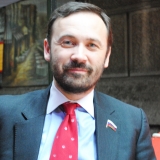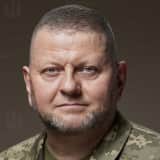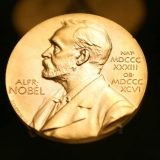Along with the Formula of Peace, a Formula of Victory is needed
The buzz surrounding a possible "ceasefire" in the war has been growing louder. While it’s unproductive to dwell on speculations about its likelihood, it is evident that any halt in combat would play right into the Kremlin's hands. Instead, we need to devise a robust plan for victory, which includes a decisive political-military strategy with the ultimate goal of overthrowing Putin's regime.
Western perspectives on Russia have undergone a significant transformation in recent months. Sanctions are becoming more stringent, progress is being made in repurposing frozen Russian assets, limitations on Western military strikes on recognized Russian territory are loosening, the scope of weaponry provided to Ukraine is broadening, and there is talk of deploying Western military instructors to Ukraine. While all these steps are indeed appropriate, they still fall short of ensuring Ukraine's triumph.
Reinforcing defenses with modern financial support, restoration plans, and the latest air defense technologies allows for resilience but not conquest. To truly win, we must eliminate the root cause of the war, centered in the Kremlin. We should consistently inform our Western allies about this and dedicate ourselves to solving this primary problem.
Unfortunately, there is no unified vision of victory today. For instance, American officials, even when discussing Ukraine's triumph, often neglect the restoration of the country's territorial integrity – a point that clearly contradicts Vladimir Zelenskyy's "Formula for Peace."From our perspective as representatives of the Russian resistance, Ukraine's victory hinges not only on restoring its 1991 borders but also on the collapse of Putin's regime and the dismantling of the Russian Federation like how The Third Reich was dismantled in 1945.
Having any strategy trumps having none, and taking action surpasses standing idle. During its recent sixth session in Warsaw, the Congress of People's Deputies formulated a ‘Blueprint for Defeating Putinism’, which I propose to detail through seven pivotal points.
First, achieving parity on the battlefield in Ukraine.
Though Kyiv tends to act asymmetrically and with heightened efficiency, the resource imbalance between Ukraine and the Russian Federation remains immense. The Russian Federation boasts a fivefold dominance in artillery, a tenfold edge in aviation, unparalleled long-range capabilities, and vast mobilization resources…
Thus, Ukraine must enhance its air defense systems, aviation capabilities, missile arsenal, and artillery units. Furthermore, lifting politically driven bans on utilizing Western weaponry against Russian military targets is imperative. The Ukrainian defense forces must have the freedom to decide both the acquisition of armaments and their tactical application in combat.
Second, to exceed the level of Russian military production.
The Kremlin's vision for next-generation warfare fell short. Russian combat efforts at the front have primarily been reduced to brutal 'meat assaults' targeting ravaged villages, utilizing outdated armored vehicles from the mid-20th century, complemented by motorcycles and golf carts armored with makeshift defenses.
Nevertheless, there is no reason to be complacent – the scale and speed of decommissioning Soviet-era equipment and manufacturing a wide array of munitions in Russia far surpass that of Western nations (even without considering contributions from DPRK, Iran, and Belarus). According to NATO intelligence, Russia produces approximately 3 million artillery rounds annually.
Substantial investments are pouring into the Western and Ukrainian defense sectors; however, time is a critical element. Western weapons manufacturers working within market constraints require several additional years to scale their production to rival that of the so-called 'axis of evil'. The current landscape includes a significant shortfall in gunpowder supplies in the West and drastic 'military' inflation when each 155-mm artillery shell can cost up to $7,000. By 2026, though, the European Union intends to reach an annual production level of 2 million shells, with the United States aiming for 1.2 million shells. This makes it realistic in the medium term to exceed the military manufacturing capacities of Russia and its associates, an essential goal in an enduring war scenario.
Moreover, the Czech initiative to supply shells to Ukraine highlighted the necessity of forging long-term contracts with nations possessing a robust military-industrial base and remaining outside Russia's sphere of influence. Interestingly, Serbia, a country with close ties to Russia, emerged as one of the key suppliers of shells to the AFU.
Third, to cut off the Russian authorities from sources of means and technologies for waging war.
The potential for sanctions and broadly, the methods of non-military Western influence on Russia, are far from being exhausted. Despite the sanctions previously imposed, an unacceptably large volume of Russian energy and natural resource exports continues to flow to foreign markets. Imposing stringent restrictions on these exports, which fund the Kremlin's war efforts, should be a priority for the sanctions coalition.
There is an obvious need for a unified global sanctions authority (similar to 'CoCom 2.0') to coordinate sanctions policies among nations, making it far more challenging to evade such restrictions. Furthermore, suggestions include enforcing or enhancing criminal penalties for violating sanctions and intensifying secondary sanction measures. It's quite baffling that, three years into a significant war in Europe, Western-made components continue to be found in the debris of downed Russian missiles and drones.
We need to devise a mechanism for lifting sanctions on those who wish to align with the side of good. This will also serve as a tool to fragment the Russian leadership, as discussed below. The conditions should include a public denunciation of the war, cessation of tax payments to the Russian Federation, investment in countering the Kremlin, and contribution to the rebuilding of Ukraine.
Our proposals to improve sanctions policy, as well as those of our partners in the Yermak-McFaul sanctions group, are on the desks of world leaders. The question is the political will to implement them.
Fourth, to achieve a split of the Russian elites.
In truth, there are no true elites in the traditional sense within the Russian Federation – there are temporary figures who have found themselves in power by chance, overseeing various assets. However, for simplicity, we will still use this term.
To say the Russian "elite" is monolithic would be incorrect. Within Putin's "terrarium of allies," constant jockeying for financial channels and administrative power persists. The ongoing purges in the Russian Defense Ministry highlight this turbulence; officials who lose their coveted positions often end up facing demotion or even pre-trial detention at worst.
One notable issue is that the Russian elite, at least for now, demonstrates an absolute paralysis of will, rendering them incapable of political action. This does not mean there is no need to work on dividing the Russian elite. Reflecting on historical precedents, many revolutions and coups have been the result of a fractured elite, where one faction sided with revolutionary forces such as parties, the military, or street demonstrators.
We recognize that there are no flawless individuals among the Russian "elites", but utilizing sanctions, among other methods, to create divisions within their ranks is a crucial objective.
Fifth, support Russians fighting for democracy.
Primarily, these include the Russian volunteer battalions within the Ukrainian Defense Forces and the Russian partisan movement inside the Russian Federation. Despite having extremely limited resources, the latter still contributes to diminishing the Kremlin's military-technical capabilities. The more resources (human, financial, informational, technical, and technological) that are available to the Russian resistance, the fewer will be accessible to the Kremlin.
Strikes deep into Russian territory targeting key military infrastructure and production facilities are feasible either by Tomahawk missiles or by guerrilla forces. Even where Ukrainian drones can reach, their impact is maximized with ground operatives for precise targeting.
Finally, key decision-makers in the management, financing, and propaganda of the war must fear retaliation. This must be a top priority for guerrilla groups.
Sixth, to create a political alternative to Putinism.
The Congress of People's Deputies is actively developing the legal framework for a post-Putin era in Russia. This process is guided by the tenets of separating powers, promoting liberal reforms, decentralizing authority, encouraging civic involvement, ensuring social justice, and affirming people's right to self-determination.
The Congress of People's Deputies welcomes other representatives of the Russian opposition to join its ranks. A proactive approach by the entire Russian opposition is necessary to influence the political processes in Russia. Ukrainian parliamentarian Oleh Dunda from ‘Sluha Narodu’, who attended the VI session of the Congress, pointed out that ‘passively waiting for a Ukrainian victory as a prerequisite for toppling Putin's regime won't foster internal political change in Russia. Joint efforts are essential for this fight’.
Seventh, dismantle the Putin regime and end the war.
In essence, this point is less independent and more a conclusion drawn from all previous arguments. Once again, I underscore that lasting peace in Europe and resolving multiple 'frozen' conflicts (in Moldova and Georgia) require the dismantling of Putinism. Restoring Ukraine’s borders to their 1991 status by Ukrainian Defense Forces reclaims territorial integrity but falls short of enabling trials for Russian war criminals or obtaining reparations. These critical tasks necessitate the dissolution of the current Kremlin administration.
The list of the aforementioned proposals was sent by Congress to the participants of the NATO summit in Washington, held on July 9–11. The Kremlin's 'talking heads' have long been convincing Russians of certain threats allegedly posed by NATO to the Russian Federation. The paradox is that it is NATO's 'non-escalating' position that protects Russia's major cities bordering Ukraine from turning into Marinka, Bakhmut, and Vovchansk. We do not wish Bryansk, Kursk, Voronezh a similar fate, but Ukraine should have the right to adequate comprehensive self-defense, suppressing shelling from these regions with the full range of available weapons.
To put it succinctly, we must devise a Blueprint for Victory to work alongside our Blueprint for Peace. Failing to do so may allow the Kremlin to gain the upper hand strategically, escalating the probability of Russia launching a ‘second front’ in areas like Narva or Daugavpils.
Ilya Ponomarev







